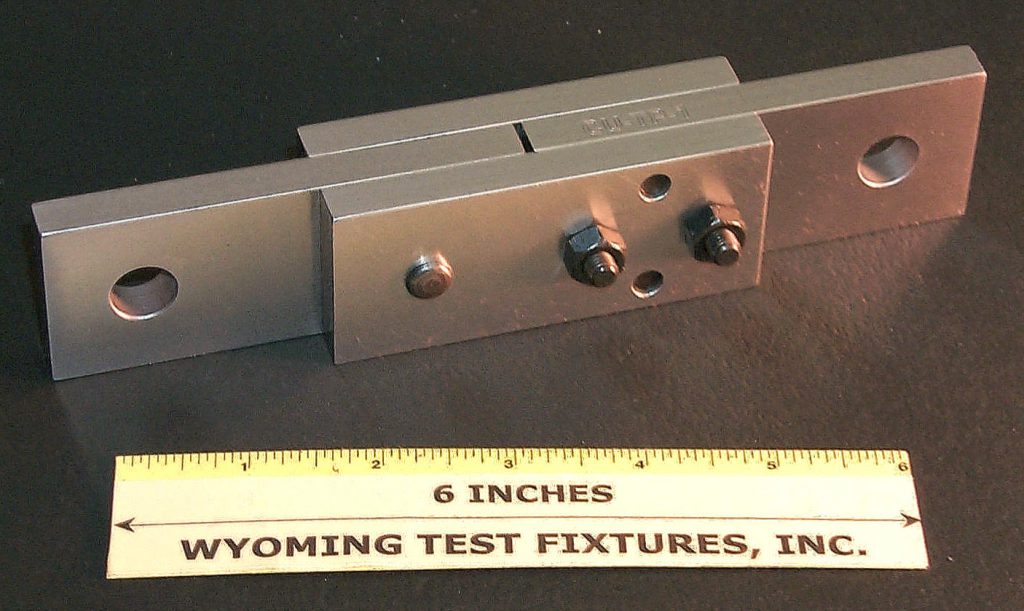Three-plate Shear Test Fixture (Federal Test 406, Method 1041)
Model No. WTF-TP (Stainless Steel)

Fig. 1: Assembled fixture with pin specimen installed.
Per Federal Test Method 406, Method 1041 (Reference 1), this double shear test method is intended for use in determining the shear strength of plastic materials. However, it can be used to test any material that the fixture is strong enough to handle. For very high strength materials, such as high strength bolts, the Fastener Double Shear Test Fixture, Model WTF-DS as described in Section H-5, would be a better choice.
A cylindrical specimen 1/2" in diameter (3/8” and 1/4" diameters being optional) is used, the specimen length being not less than three times the diameter. The name of the fixture refers to the three plates in contact with the test specimen, as shown in Fig. 1. These three plates are to each be equal in thickness to the diameter of the specimen being tested. The two outer plates are permanently pinned and bolted to a spacer plate that is slightly thicker, so that the center plate can move freely. The two pins used to insure that specimen hole alignment is maintained can be seen in the photograph of Fig. 1. A hole is provided in each end of the fixture for attachment to the tensile testing machine.
The test is performed in such a manner that the sheared portion of the specimen completely clears the restrained portions after failure, i.e., a complete shear failure has occurred. The failure load and/or the shear strength (failure load divided by the double shear area) is reported.
There are a number of other types of double-shear (and single-shear) test methods and fixtures in existence also.
Source of Additional Information:
1) Federal Test Method Standard No. 406, Method 1041, “Shear Strength (Double Shear),” October 1961.

